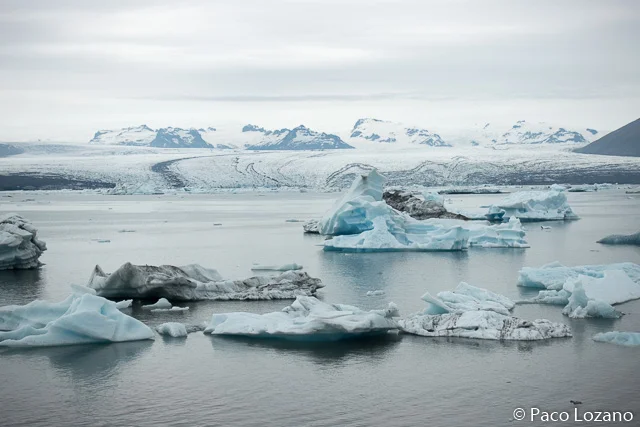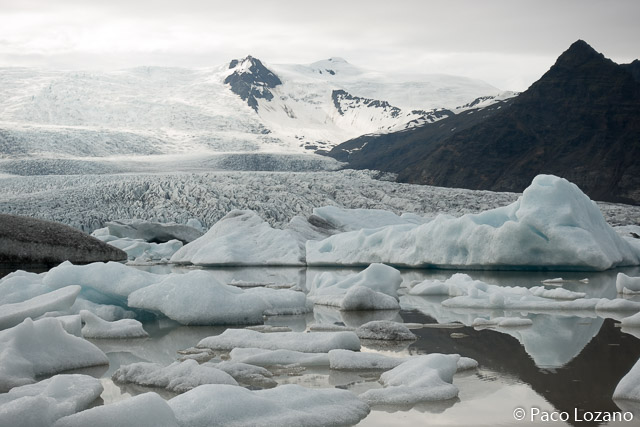Jökulsárlón glacial lake
Iceland and, in particular, the Jökulsárlón glacial lake, is probably the most accessible place in the world where you can see icebergs. And this lake is next to the road No. 1, also called Ring Road (Hringvegur in Icelandic), which is the only one that circumvents the island.
A glacial lake is a lake that fills a depression originated as a result of erosion caused by a glacier. When the glacier retires, the lake appears. Then, as the liquefaction of the glacier progresses, it grows. That is what is happening in Iceland: glaciers melt due to climate change, and glacial lakes grow. The lakes at the southern end of the Vatnajökull glacier are an important tourist attraction, because they are full of icebergs.
This lake, as I said before, is next to the most important road in Iceland. You are driving and, suddenly, you see it. And it impresses you. In the background are the eternal (hopefully) snows of the glacier, and in front is the great lake, full of icebergs of whimsical shapes in different shades of blue.
Of course, there is a parking lot next to the lake. And, after parking the car, you can walk along the shore, climb the small elevations of the land to see the panorama from there, and also navigate the lake, among the icebergs, in an amphibious vehicle. You will meet a lot of tourists, but it's not like you feel overwhelmed.
The Jökulsárlón lake is really beautiful, so much that it has been the scene of many films. It would be better not to think that all that beauty is due, at least in part, to climate change.
The lake is separated from the sea by a narrow isthmus, and its growth threatens to turn the lake into a sea inlet. The problem is that the road passes through the isthmus ...
Near the Jökulsárlón glacier lake is the Fjallsárlón, which is much smaller and can not be seen from the Ring Road. It is worth to deviate from the main road to get to it, because it is visited by fewer tourists. You may even be alone if you arrive at an hour or on a date when the establishment of amphibious vehicles is closed (Fjallsárlón also has one). In addition, as the lake is smaller, you can contemplate the glacier tongue closer.
But make no mistake: the Jökulsárlón is much more spectacular. By the way, both are in the Vatnajökull National Park, the largest in Europe.
A glacial lake is a lake that fills a depression originated as a result of erosion caused by a glacier. When the glacier retires, the lake appears. Then, as the liquefaction of the glacier progresses, it grows. That is what is happening in Iceland: glaciers melt due to climate change, and glacial lakes grow. The lakes at the southern end of the Vatnajökull glacier are an important tourist attraction, because they are full of icebergs.
The Jökulsárlón Glacier Lagoon
This lake, as I said before, is next to the most important road in Iceland. You are driving and, suddenly, you see it. And it impresses you. In the background are the eternal (hopefully) snows of the glacier, and in front is the great lake, full of icebergs of whimsical shapes in different shades of blue.
Of course, there is a parking lot next to the lake. And, after parking the car, you can walk along the shore, climb the small elevations of the land to see the panorama from there, and also navigate the lake, among the icebergs, in an amphibious vehicle. You will meet a lot of tourists, but it's not like you feel overwhelmed.
The Jökulsárlón lake is really beautiful, so much that it has been the scene of many films. It would be better not to think that all that beauty is due, at least in part, to climate change.
The glacier lake Fjallsárlón
But make no mistake: the Jökulsárlón is much more spectacular. By the way, both are in the Vatnajökull National Park, the largest in Europe.



No comments:
Post a Comment